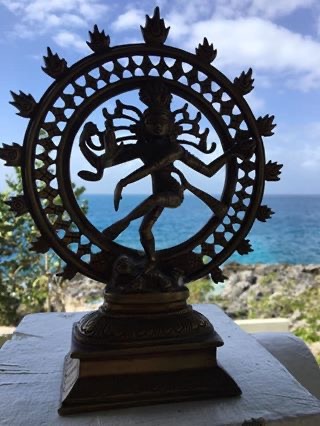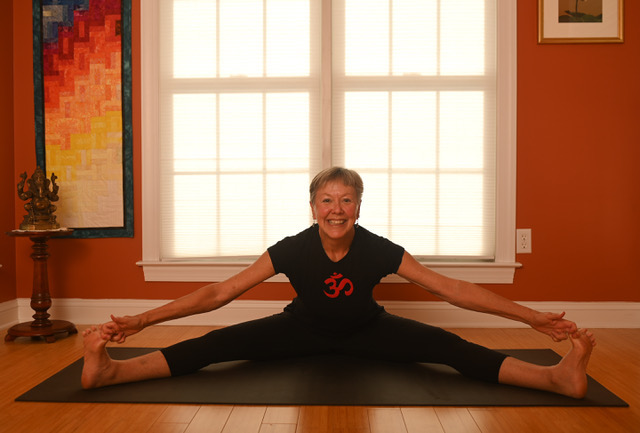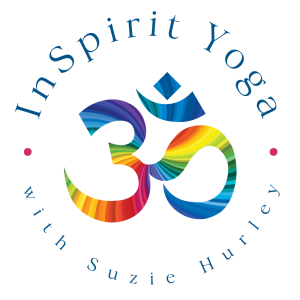What is Yoga?
 Yoga is comprised of asana (postures), pranayama (breathing exercises), and meditation. (going within), all supported by an extremely deep and profound philosophy that is inspiringly relevant today. The word “Yoga” comes from the Sanskrit word “yug” and means to yoke, join or unite. Here we are yoking or joining our relative consciousness with the greater energy or Consciousness of the Absolute. It is bringing all the different parts of ourselves, mental, emotional, physical, and spiritual into a more unified wholeness.
Yoga is comprised of asana (postures), pranayama (breathing exercises), and meditation. (going within), all supported by an extremely deep and profound philosophy that is inspiringly relevant today. The word “Yoga” comes from the Sanskrit word “yug” and means to yoke, join or unite. Here we are yoking or joining our relative consciousness with the greater energy or Consciousness of the Absolute. It is bringing all the different parts of ourselves, mental, emotional, physical, and spiritual into a more unified wholeness.
Above all, Yoga was always meant to be a spiritual practice. By spiritual practice I mean a tangible, pragmatic practice to draw each of us closer to the depths of our hearts, and awaken to our own inherent Divinity. To raise our own level of Consciousness and in this way, help to raise the consciousness of all beings to aid in making our world a more spiritually mature place in which to live.
Different Systems of Yoga
There are many wonderful systems and lineages of Yoga, and all have something to offer. Hatha Yoga is kind of like the big umbrella under which all the physical forms of Yoga come under.
There are systems of Yoga that emphasize primarily physical alignment, (example: Iyengar Yoga, Anusara Yoga and others); systems that emphasize the energy body (example: Kundalini Yoga); and systems of Yoga that emphasize the spiritual and emotional aspects of Yoga. (example: Kripalu & Anusara). Ashtanga Yoga is a lineage of Yoga that emphasizes strong Vinyasa, or moving from pose to pose with a very specific pranayama or breathing technique. I mention these specific lineages as they are very well known and esteemed in the yoga world. They have also been part of my own personal experience for over 40 years. In addition, there are many other systems including eclectic forms of Yoga that individual teachers have created by borrowing or combining from different systems, or creating something brand new. There is something for every body! How wonderful!
A Bit of Yogic Philosophy
Yoga is divided into Eight Limbs called the Eight Fold Path which are comprised of the following:
- Yamas – universal morality
- Niyamas – personal observances
- Asana – physical postures or poses
- Pranayama – breathing exercises for energy, clarity and purification
- Pratyahara – sensory withdrawal from attachment to external objects
- Dharana – cultivating inner perceptual awareness, concentration
- Dhyana- unbroken flow of awareness, meditation
- Samadhi – deep egoless absorption into the One, divine union
The Yamas and Niyamas, the first two Limbs, are the foundation of the others.
Yamas:
- Ahimsa – non-harming, compassion for all living things
- Satya – commitment to truthfulness
- Asteya- non-stealing, taking nothing that doesn’t belong to you
- Brahmacharya- sense control, nothing to excess (sex, food, drink, etc.)
- Aparigraha – non-greed, non-hoarding
Niyamas:
- Sauca- cleanliness, purity. (inner and outer, mind and body)
- Santosa – contentment/peace. Acceptance of what is.
- Tapas – heat, disciplined use of our energy
- Svadhyaya – self-study, self-reflection, inquiry
- Ishvara Pranadana – surrender to what is/to the greater energy
You may have heard of the Chakras, the seven centers of energy in the body. The word “chakra” from Sanskrit translates to “wheel” or “disk,” but references a spiritual energy center within the human body, of which there are seven along the spine, and through the neck and the crown of your head. All aspects of Yoga work on balancing the energy in each center, as we can have an excess or a deficiency of energy, which affects all the aspects of our health.
The Chakras are as follows:
 Muladhara – Root chakra. At the base of the spine, deep red in color, about having our survival needs met, feeling grounded and secure. The element is Earth. The bija seed sound is Lam.
Muladhara – Root chakra. At the base of the spine, deep red in color, about having our survival needs met, feeling grounded and secure. The element is Earth. The bija seed sound is Lam.- Svadhisthana – Sacral or Pelvic chakra. The element is Water, the color is Orange. About creativity, sensuality, sexuality, fluidity, receptivity to change, being in the flow. Bija seed sound is Vam.
- Manipura – Navel chakra. Element is Fire, color is bright yellow. Bija seed sound is Ram. About manifesting your power in the world. Having a healthy self-esteem, confident and alive, taking appropriate risks, courage and overcoming fear.
- Anahata – Heart chakra. Element is Air, color is emerald green, sound is Yam. About giving and receiving Love, moving toward unconditional love. Compassion, forgiveness and acceptance.
- Vishuddha – Throat chakra. Element is Ether, color is lapis blue, bija sound is Ham. Voicing our truth, speaking with clarity, communicating honestly, listening well.
- Ajna – Third Eye center. Element is Light, color is indigo, the seed sound is OM. About intuition, our deepest knowing. Governs the rest of the chakras. Insight, trusting our inner wisdom and experiencing our own Divinity.
- Sahasrara – Crown chakra. Color is white or sometimes violet. No sound, silence or OM. No real element, it’s more like cosmic energy. Connects us to the spiritual realm, recognizing we are Divine and directly experiencing our Oneness. (We are spiritual beings having a human experience.)
Yoga has its early roots in India, and as we can see from the summary below, it dates back before 5000 years ago. Two of the main historical texts of Yoga are the Yoga Sutras of Pantanjali and the Bhagavad Gita.
A very brief and chronological history of Yoga:
- Archaic Yoga: Before 4500 BCE
- Vedic Era: 4500 – 1900/1500 BCE
- Pre – Classical Yoga: 1900/1500 BCE- 200 CE/AD
- Patanjali and Classical Yoga: 150 – 200 CE/AD
- Postclassical Yoga: 200 – 1893 CE/AD
- Modern Yoga: 1893 – Present
InSpirit Yoga
The type of Yoga I teach I have termed InSpirit Yoga, to hopefully give students the idea that Yoga is more than just physical exercise. My background is rooted in both precise and detailed physical alignment with a good knowledge of anatomy and therapeutics (16 years of Iyengar & 18 years of Anusara), along with the depth of a personal growth process that emphasizes mental, emotional and spiritual growth. (Kripalu Yoga). My intention is to blend these, including some yogic philosophy as well, in the very best way I can.
I bring a spiritual perspective to each class by introducing a theme and leading a centering at the beginning of the class. This week it was “Patience and Optimism,” inspired by a reading by Fr. Richard Rohr I had received a few days earlier. Then I weave it through the class in the best way I can. (example might be a focus on the hamstrings, as they require both patience and optimism!). I’ve been trained by some of the best in yoga therapeutics so each class addresses injuries and special conditions. We always return to the home of the heart in Savasana, and apply the theme to our lives, so hopefully there’s a takeaway into the big mat of the world.
Yoga is about our very transformation on every level. It is my intention to give each student a more meaningful yoga practice while keeping them safe, engaged and joyful. We find our way back to the home of our hearts, where grace, wisdom and peace dwell. I keep it real for as we expand our consciousness, we expand our capacity to meet life’s challenges with optimism and grace. We can then say Yes to all of life.
Suzie published an article on Yoga and Health in The Star Democrat Easton, MD on Sunday June 27, 2021. You can read it here.

What People are Saying
“Suzie is the real deal! Her enthusiasm, her infectious laugh, and integrity, presence, and wisdom will feed your body and soul long after class has ended!”
“Suzie has a distinctive sparkle that exudes a playful and radiant joy.”
“Suzie Hurley is a master teacher whose instruction is inspirational, challenging, and empowering – She is without question, a ‘teacher’s teacher’.”
~ Dr. Olga Rodriguez Rasmussen, Certified Yoga Teacher


